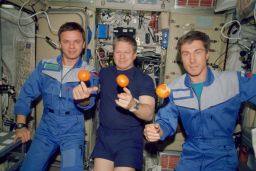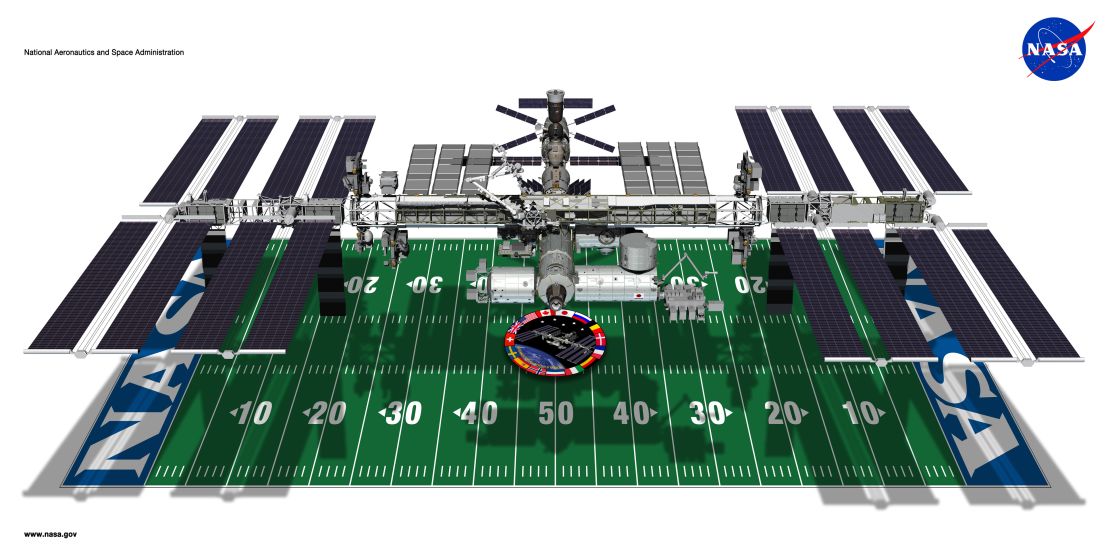Story highlights
Expedition 1 docked on November 2, 2000, carrying one American and two Russian space explorers
Hundreds of experiments have been done, and the technology developed is used on Earth
NASA sees the station as a springboard to Mars, its "next giant leap"
Continuous human habitation in space began 15 years ago, when three people stepped onto an orbiting laboratory that space agencies see as a springboard to Mars.
On November 2, 2000, a Russian Soyuz rocket docked at the International Space Station carrying Expedition 1, made up of NASA astronaut William Shepherd and Roscosmos cosmonauts Yuri Gidzenko and Sergei Krikalev.
Read the transcript of CNN’s live coverage of Expedition 1 in November 2000
For 136 days, 17 hours and 9 minutes, they lived in the narrow quarters of the station as it zipped silently around Earth at 5 miles per second, 250 miles above its surface.

To amuse global audiences, they played with weightlessness on camera. But mostly, they carried out experiments in the microgravity laboratory. NASA says breakthroughs have been achieved there that would not have been possible on Earth.
The station has been continuously inhabited since, and on Monday, to celebrate the anniversary, the current crew of Expedition 44 will talk live on camera.
Two of them, NASA’s Scott Kelly and Roscosmos’ Mikhail Kornienko, are on a one-year mission to test the effects on the human body of long-term stays in space. The experiment is a precursor to sending people to Mars.
Here are some facts and highlights of 15 years aboard the station, which has been visited by 200 people from 15 countries.
Dimensions
The International Space Station was built in collaboration by 16 countries – the United States, Canada, Japan, Russia, Brazil, Belgium, Denmark, France, Germany, Italy, the Netherlands, Norway, Spain, Sweden, Switzerland and the United Kingdom.

It weighs nearly 1 million pounds and is about the size of a football field. It has as much pressurized living and working space as a Boeing 747 passenger jet.
A Russian Proton rocket flew the first piece, the Zarya module, up to orbit in 1998. Even after Expedition 1 arrived, more pieces were added over the years.
Marvel
Spaceflight has often inspired a spiritual kind of marvel and love for the Earth in those privileged enough to view their home planet from space.
The space station experience is no different. Circling the Earth every 90 minutes, inhabitants are treated to a spectacular sunrise or sunset every 45 minutes.
Canadian astronaut Chris Hadfield, a station alum, has given a particularly inspiring account of holding on to the space station during a spacewalk and flying above Earth.
“It’s roaring silently with color and texture as it pours by just mesmerizingly next to you. And if you can tear your eyes away from that, and you look under your arm down at the rest of everything, it’s an unfathomable blackness with a texture you feel like you could stick your hand into. And you are holding on with one hand – one link to the other 7 billion people.”
Many know Hadfield from his viral video three years ago from the station covering David Bowie’s “Space Oddity.”
Innovations
Three laboratory modules operate aboard the station, one from the United States, one from European Union and one from Japan.
Aside from the many hundreds of experiments carried out in 15 years, technological innovations designed for the station have been transferred to help people on Earth, particularly when it comes to health and medicine, NASA says.
Filtration systems designed for space are helping people around the world gain access to clean water.
Compact ultrasound devices developed for the use on the station have led to portable instruments that can travel to patients who otherwise might not have access to diagnostic machines.
Robotic arms working on the station have been adapted to do things on Earth like perform surgery.
Highs and lows
A lot can happen in 15 years, including some spectacular highs and dismal lows.
In August 2003, cosmonaut Yuri Malenchenko married fiancee Ekaterina Dmitriev from space. They exchanged vows over a hotline. Dmitriev stood next to a life-sized cutout of Malenchenko.
In 2007, the station welcomed a space tourist, Charles Simonyi, who accompanied Expedition 15. He was aboard for 12 days before returning to Earth with the crew of Expedition 14.
In June 2007, the station’s computers crashed. They controlled its orientation and oxygen production. The crew used space shuttle Atlantis’ thrusters to help maintain the station’s position while its computers were brought back on line.
Throughout any political tensions between member nations on Earth, particularly between Russia and the United States, the cooperation on the space station has remained robust.
“It is the blueprint for global cooperation,” NASA says. “One that enables a multinational partnership and advances shared goals in space exploration.”






